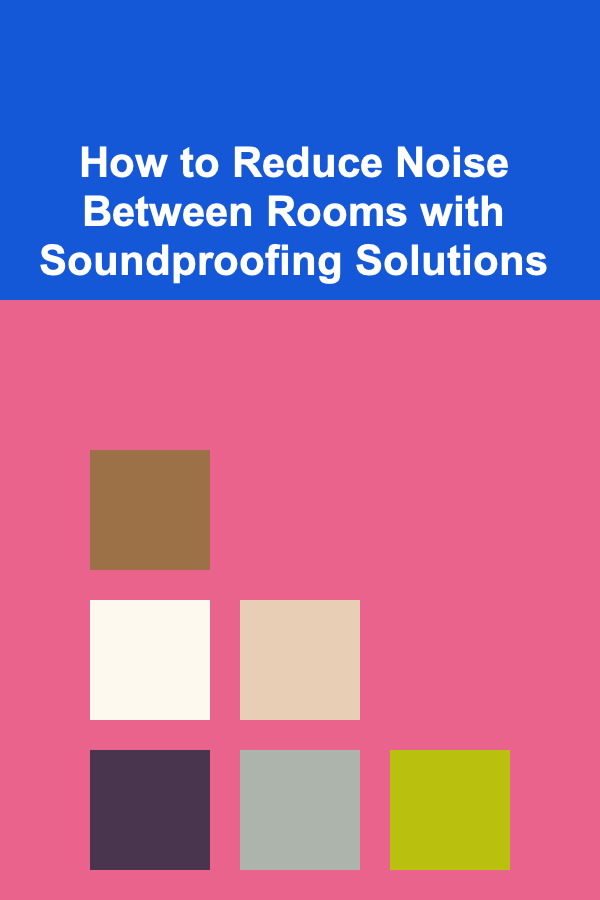
How to Sell Vintage Clothing Through a Virtual Pop-Up Shop: An Actionable Guide
ebook include PDF & Audio bundle (Micro Guide)
$12.99$5.99
Limited Time Offer! Order within the next:

Selling vintage clothing through a virtual pop-up shop is an exciting way to reach new customers while capitalizing on the growing demand for sustainable fashion. Pop-up shops---temporary, limited-time retail experiences---have become incredibly popular in recent years due to their ability to create a sense of exclusivity and urgency. When conducted virtually, they allow sellers to tap into a global audience, reducing overhead costs associated with physical locations.
If you're thinking of launching a virtual pop-up shop to sell your vintage clothing, this guide will walk you through every step of the process. From choosing the right platform to marketing your shop, we'll cover the essential elements you need to create a successful virtual pop-up shop for your vintage clothing business.
Step 1: Curate Your Vintage Collection
The first step in selling vintage clothing through a virtual pop-up shop is to curate your collection. Vintage fashion buyers are looking for unique, high-quality pieces that tell a story. Here are some tips to help you curate your collection:
Focus on a Niche
Vintage clothing spans a wide range of styles, eras, and trends. Narrowing down your collection to a specific niche or theme will help set your pop-up shop apart. You could focus on:
- A specific decade: For example, 1970s boho or 1990s streetwear.
- A particular category: Such as vintage dresses, denim, or jackets.
- Sustainable or eco-friendly fashion: Promote your shop as an environmentally conscious option for those seeking sustainable alternatives to fast fashion.
Quality Control
Ensure that all items in your collection are in good condition. Vintage clothing often has unique wear-and-tear characteristics, so it's important to inspect every piece for:
- Stains or damage: Be upfront about any flaws in your product descriptions.
- Repairs and alterations: If you've repaired any items, mention it as it can add value to the item's history.
- Authenticity: If possible, include information about the item's origin, designer, or era. Authenticity can be a major selling point for vintage clothing buyers.
Pricing
Set fair and competitive prices for your vintage pieces. Research the market to ensure that your pricing aligns with what similar items are selling for. Consider factors like the item's age, brand, condition, and rarity.
Step 2: Choose the Right Platform for Your Virtual Pop-Up Shop
A virtual pop-up shop requires a digital platform that supports sales, showcases products, and allows for an immersive shopping experience. Here are some platform options you might consider:
E-commerce Websites
E-commerce platforms like Shopify , Big Cartel , and Squarespace allow you to build a fully branded online shop with a customizable design. These platforms are great if you want full control over your shop's look and feel, and they provide the functionality needed to handle payments, inventory, and shipping.
- Shopify: Ideal for larger inventories and businesses planning to scale. Offers a wide range of customization options, and you can easily integrate it with social media channels.
- Big Cartel: A simple, affordable option for small-scale sellers. Perfect if you have a limited collection and want a quick setup.
- Squarespace: Known for its beautiful, high-quality templates, making it an excellent choice for sellers who prioritize design.
Online Marketplaces
Selling on established marketplaces like Etsy or Depop can help you reach an already engaged audience of vintage enthusiasts. These platforms provide built-in traffic and credibility, making it easier to gain exposure for your products.
- Etsy: One of the most popular platforms for handmade and vintage goods. Etsy allows you to set up an online shop quickly, and it provides tools for managing inventory and customer communication.
- Depop: A social shopping app with a focus on vintage clothing and second-hand fashion. Depop is especially popular with younger shoppers who value sustainability and unique style.
Social Media and Live Sales
Social media platforms like Instagram and Facebook are powerful tools for showcasing your vintage clothing in a more casual, interactive way. Using Instagram Stories, Instagram Live, or Facebook Live to host pop-up events or flash sales can create a sense of urgency and excitement among your followers.
- Instagram: You can set up a dedicated account for your vintage collection or use Instagram's shopping feature to tag products in posts, making it easy for followers to purchase.
- Facebook Live: A great tool for hosting live sales, where you can interact with customers in real-time and answer any questions they may have about the products.
Choose a platform based on your target audience, budget, and the level of customization you need. You can also sell across multiple platforms to maximize your reach.
Step 3: Build Buzz Before Launch
Creating excitement around your virtual pop-up shop is key to driving traffic and sales. A pop-up shop is all about exclusivity, so it's important to build anticipation before the actual launch. Here are several tactics you can use:
Tease the Launch on Social Media
Start promoting your pop-up shop several weeks before the official launch. Use Instagram and Facebook to tease the upcoming shop, post sneak peeks of your vintage collection, and create countdowns to generate buzz.
- Behind-the-scenes content: Show your audience how you're preparing for the pop-up, curating the collection, or doing any repairs/alterations to pieces.
- Countdown posts: Count down to the launch with daily posts to create anticipation.
Collaborate with Influencers
Partnering with fashion influencers or bloggers who align with your brand can help expand your reach. Choose influencers who specialize in vintage or sustainable fashion and have an engaged following. They can promote your virtual pop-up by showcasing your items and sharing exclusive discount codes.
Offer Exclusive Previews or Early Access
Consider offering loyal followers or newsletter subscribers early access to your virtual pop-up shop. This could be in the form of a limited pre-sale or an exclusive preview of the collection before the general public.
Create an Event or Launch Party
Virtual pop-up shops can benefit from an event atmosphere. Host a live launch event where you showcase the collection, talk about the history of the pieces, and answer questions from viewers. Platforms like Instagram Live or Facebook Live are perfect for this kind of interactive experience.
Step 4: Optimize Your Virtual Pop-Up Shop for Conversions
Once your pop-up shop is live, your next goal is to convert visitors into buyers. Here's how you can optimize your shop for maximum sales:
High-Quality Photography and Descriptions
Great visuals and detailed product descriptions are crucial for online sales. Vintage clothing shoppers want to see close-up shots of the fabric, labels, and any unique details that make an item special. Use well-lit, high-resolution images to highlight the best features of each piece.
- Multiple angles: Show your products from different perspectives (front, back, and any important details).
- Zoom functionality: Allow potential buyers to zoom in on images to inspect fabrics, stitching, and other fine details.
- Detailed descriptions: Provide comprehensive descriptions that cover sizing, condition, fabric type, and any historical context related to the item.
Simple and Secure Checkout
Make sure that your checkout process is simple, secure, and user-friendly. Offer multiple payment options such as credit cards, PayPal, or even Venmo. The easier and more trustworthy your checkout experience, the higher your chances of conversion.
- Shipping transparency: Clearly communicate shipping fees and delivery times. Consider offering free shipping on orders over a certain amount to incentivize larger purchases.
- Easy return policy: Ensure that customers are aware of your return and exchange policies to alleviate any concerns.
Limited-Time Offers and Urgency
Create urgency by offering limited-time discounts, flash sales, or exclusive deals for a select number of customers. The scarcity factor can help motivate shoppers to buy sooner rather than later.
- Countdown timer: Use a countdown to show how long your pop-up will last, creating a sense of urgency to act fast.
Step 5: Provide Excellent Customer Service
Customer service is critical in retaining customers and building a loyal following. Keep the following tips in mind:
Clear Communication
Respond to inquiries promptly, whether via email, social media, or chat. If customers have questions about sizing, fit, or condition, be transparent and helpful.
Personalize the Experience
Since virtual pop-up shops often have a more intimate feel than traditional e-commerce stores, take advantage of this by adding a personal touch. For example, send handwritten thank-you notes with each purchase or offer personalized styling recommendations based on your customers' preferences.
Post-Sale Engagement
After a customer makes a purchase, continue engaging with them. Follow up with a thank-you email, ask for feedback, or encourage them to share their purchases on social media. Consider offering loyalty rewards for repeat buyers to incentivize future sales.
Step 6: Analyze and Adapt
After your virtual pop-up shop has concluded, take time to analyze its performance and gather insights to improve your next event. Key metrics to track include:
- Sales data: Which items sold the most? Which had the lowest conversion rates?
- Traffic sources: Where did your visitors come from (social media, email, search engines, etc.)?
- Customer feedback: What did your customers love about the experience, and what could be improved?
Use this data to refine your approach, enhance your collection, and optimize your marketing strategy for future virtual pop-up shops.
Conclusion
Launching a virtual pop-up shop for vintage clothing is an exciting opportunity to showcase your collection to a global audience, create a sense of exclusivity, and build a dedicated customer base. By curating a unique collection, choosing the right platform, building anticipation, and providing excellent customer service, you can turn your virtual pop-up into a successful and profitable venture.
Keep refining your approach with each event, and don't be afraid to experiment with new marketing tactics or sales strategies. The world of online retail is constantly evolving, and by staying adaptable, you can continue to thrive in the competitive world of vintage fashion.

Beginner Guide: The Essentials of Content Creation
Read More
How to Build a Checklist for Developing a Social Media Strategy for Product Launch
Read More
How to Create a Centralized Location for All Important Papers
Read More
How to Improve Home Security with Motion-Sensor Lights
Read More
How to Reduce Noise Between Rooms with Soundproofing Solutions
Read More
Making Passive Income with Deep Learning
Read MoreOther Products

Beginner Guide: The Essentials of Content Creation
Read More
How to Build a Checklist for Developing a Social Media Strategy for Product Launch
Read More
How to Create a Centralized Location for All Important Papers
Read More
How to Improve Home Security with Motion-Sensor Lights
Read More
How to Reduce Noise Between Rooms with Soundproofing Solutions
Read More